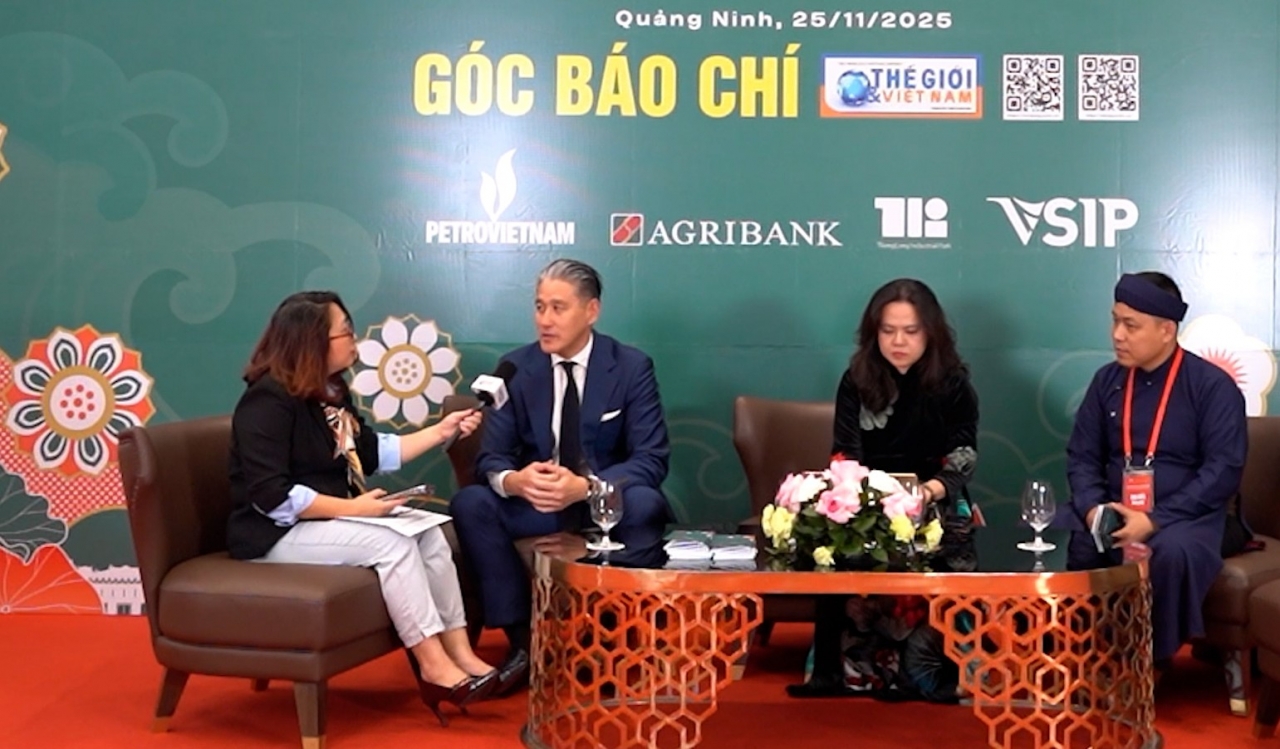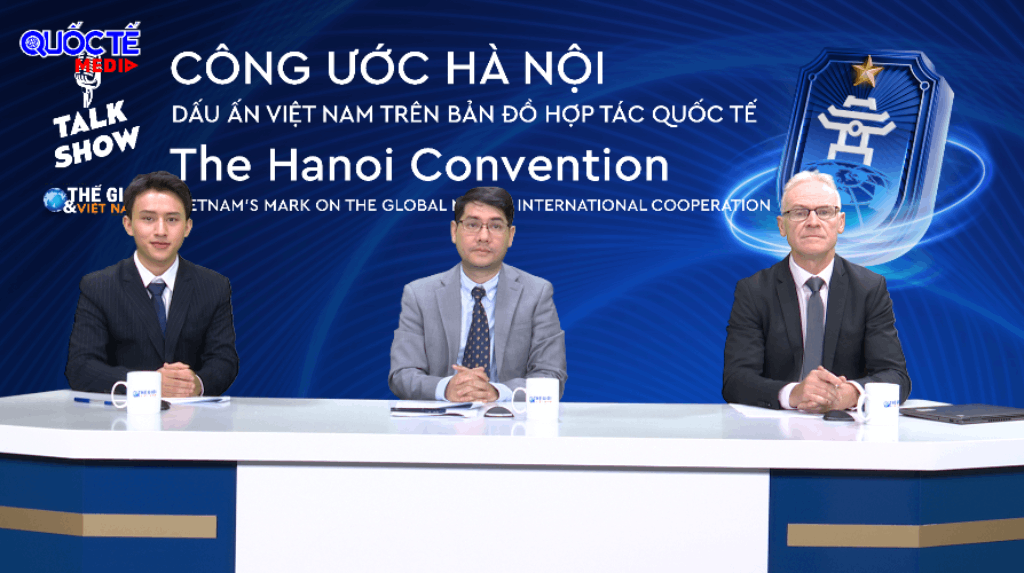
Scholar highlights Vietnamese workers and their opportunities for development
Latest
 |
| According to PwC’s study in 2021, 82% of respondents believe remote work will remain a long-term trend, and 80% of Vietnamese businesses consider it essential to future workforce strategies. (Photo: Shutterstock) |
In an interview with The World and Vietnam Report, Dr. Luong Thanh Thao, Interim Senior Program Manager, Human Resource Management, The Business School, RMIT University Vietnam said on human resources and Vietnam's potential for labour export .
What do you think about the position of the Vietnamese labour force in the global economy?
Vietnam's labour force plays an increasingly vital role in the global economy, driven by robust growth and industrialization. According to the World Bank, Vietnam has over 56 million workers in 2023 (1.39 times more than Thailand) with 58% under the age of 35. This young demographic offers a dynamic labour pool across manufacturing and services.
 |
| Dr. Luong Thanh Thao, Interim Senior Program Manager, Human Resource Management, The Business School, RMIT University Vietnam. |
Vietnam’s workforce is relatively well-educated. The General Statistics Office of Vietnam reported a literacy rate of 96.6 for people aged 15 and above in 2023, well higher than the global average. Vietnam has also made significant investments in aligning education with labour market demands, particularly through technical and vocational education and training (TVET). Despite the COVID-19 pandemic, accreditation efforts continued in 2021, with four independent accrediting agencies established since 2019. Of 50 VET institutes reviewed, 98% received accreditation. By 2030, Vietnam aims to increase high-quality VET institutions from 70 to 90, with 60 reaching ASEAN Top 4 standards and six nearing G20 benchmarks.
The Vietnamese labour force has several strengths that enhance its position in the global market. Competitive labour costs compared to countries like China or Thailand attract foreign investment, making Vietnam a preferred destination for multinational companies looking to optimize production costs. Additionally, according to PwC’s Asia Pacific Workforce Hopes and Fears Survey 2024, 71% of Vietnamese workers feel able and confident to demonstrate their skills – higher than the regional average of 57%. Moreover, 55% used generative AI in 2023, with around 90% optimistic about its potential to improve work quality, creativity, and skills development.
Nonetheless, challenges remain. A persistent skills mismatch limits the effectiveness of education in meeting employer needs, especially in high-tech sectors. While Vietnamese workers are known for their adaptability and strong work ethics, there is a growing demand for more specialized skills to boost productivity. Vietnam’s labour productivity, despite steady improvement, lags behind regional peers. In 2021, it ranked 136th out of 185 countries. Comparatively, Malaysia, Thailand, and China often appeal more to investors prioritizing productivity.
Finally, concerns over working conditions and labour rights impact employee satisfaction and retention. These issues, if left unaddressed, may undermine long-term productivity and Vietnam’s competitive advantage.
As Vietnam strengthens its global economic integration, labour export is necessary. Could you elaborate on the role of labour export in the country's integration process?
As a developing country, Vietnam continues to send skilled workers abroad while attracting foreign investment. Labour export has created valuable employment opportunities for Vietnamese workers and positively influenced socio-economic development. Over the years, the Vietnamese Government has improved the legal framework regulating labour export, recognizing it as a key national policy.
Labour export plays a vital role in Vietnam’s global economic integration by opening access to overseas job markets – particularly in countries with labor shortages such as Japan and Germany. This not only provides employment but also generates substantial remittance. According to statistics from the authorities in 2024, over 700,000 are currently employed overseas, sending home approximately US$3.5-4 billion annually. These remittances contribute to national economic stability by boosting domestic consumption, reducing poverty, and improving living standards for families.
Beyond economic benefits, labour export fosters skill development and knowledge transfer. Vietnamese workers gain exposure to advanced technologies and global practices, which they bring back upon return. This enriches the nation’s human capital, stimulates innovation, and supports productivity growth. A more experienced and globally aware workforce enhances Vietnam’s attractiveness to foreign investors.
However, to ensure sustainable benefits, labour export must be managed carefully. The government should promote ethical labor practices and protect workers' rights. A 2014 study on Vietnamese migrants in East Asia revealed cases of trafficking, abuse, and forced labour - highlighting the importance of safeguarding workers abroad.
Moreover, preparing workers for international roles is essential. Those with strong vocational training and adaptable skills are more competitive in global job markets and better able to meet international standards. Continued investment in vocational education will enhance worker employability and strengthen the overall quality of Vietnam’s labor force.
In summary, labour export offers significant economic and social advantages for Vietnam, but it must be supported by effective policies, ethical safeguards, and ongoing investment in workforce development to fully realize its potential.
What are the opportunities and challenges for Vietnamese labour export, especially in the context of globalisation and the constant development of technology?
Vietnam’s labour export landscape presents both promising opportunities and notable challenges, particularly amid globalization and rapid technological change. A key opportunity lies in the growing global demand for skilled labour in sectors such as healthcare, engineering, construction, and IT. Vietnamese workers are well-positioned to meet these needs, supported by the government’s efforts to negotiate trade agreements and expand employment markets abroad.
The rise of remote work, accelerated by the COVID-19 pandemic, further enhances prospects. Vietnamese professionals can now access global job markets without relocating. According to PwC’s study in 2021, 82% of respondents believe remote work will remain a long-term trend, and 80% of Vietnamese businesses consider it essential to future workforce strategies.
However, challenges remain. The fast pace of technological advancement demands specialized skills that are not yet widespread in Vietnam’s labour market. As automation and AI reshape industries, workers must be equipped with competencies in areas such as data analysis, software development, and digital marketing. This underscores the urgent need for expanded investment in education and vocational training.
Barriers to labour mobility also persist. Issues such as visa restrictions, weak legal protections, and potential exploitation abroad can undermine labor export efforts. Vietnamese workers often face inadequate support in navigating complex foreign labor systems.
To address these challenges, the Vietnamese Government must ensure strong legal safeguards for overseas workers and improve access to information and resources. Additionally, close collaboration with international employers is essential to uphold standards, protect worker rights, and ensure ethical recruitment practices.
In sum, while labour export holds vast potential for Vietnam’s economic and workforce development, it requires strategic policy, skills investment, and worker protection to maximize long-term benefits. Noticeably, close cooperation with foreign employers is essential to maintain standards and protect the dignity of Vietnamese labourers.
Do you have any suggestions to improve the quality of the Vietnamese workforce, so that it can successfully integrate in the world’s labour market and provide much-needed human resources for the Vietnamese economy?
To improve workforce quality and global integration, Vietnam must adopt a multi-faceted strategy centered on education, vocational training, and industry collaboration.
Reforming the education system is key. Emphasizing critical thinking, creativity, and digital literacy will prepare individuals for the fast-changing global economy. Promoting STEM (science, technology, engineering, and mathematics) education, modern teaching methods, and lifelong learning will empower workers to adapt and grow continuously.
Equally important is expanding vocational education and training (VET). The government should modernize VET institutions, enhance training facilities, and partner with private companies to align curricula with market demands. Such collaboration can also create internship and apprenticeship opportunities, offering students practical experience and boosting employability. Targeting high-demand sectors like IT, healthcare, and renewable energy will help develop a workforce ready for both domestic and global markets.
Improving foreign language proficiency – particularly English – is another priority. Strong language skills enable effective communication and increase employability in international settings. Schools and vocational institutions thus should integrate English training to prepare students for diverse work environments.
Finally, fostering entrepreneurship and innovation is essential for long-term workforce development. Encouraging young professionals to pursue startups promotes a culture of adaptability and resilience. Government support through funding access, startup incubation, and R&D incentives can empower individuals to create their own opportunities and contribute to national growth.
In sum, an integrated approach – combining educational reform, skills training, language development, and entrepreneurial support – will help Vietnam build a globally competitive, future-ready workforce.
Thank you, Dr. Luong Thanh Thao!
























